There’s something special about trains, isn’t there? Kid’s television, model railways, trainspotting, The Orient Express – there’s something about locomotives that people just love. This fascination carries through into board games too. So much so, that there’s an entire sub-genre of long, complex games which is just about running train companies – the 18xx series. Ride The Rails, from Capstone Games, takes the ‘invest in a train company’ formula and boils it down into a much simpler, quicker game. It’s from a sub-genre known as Cube Rails, and it’s number two in Capstone’s Iron Rail series
The designer is listed as a Harry Wu, and if it’s not a name you recognise, that’s because it’s a pseudonym belonging to John Bohrer. John is a famous train game designer, who even has some of the 18xx games with his name on. Accompanying the streamlined design is more beautiful artwork and graphic design from one of my favourites, Ian O’Toole. This small box game packs in a huge board, a load of little white passenger meeples, and a freight car’s worth of tiny, coloured trains. It’s cuteness overload and the pieces are impossible not to play with.
Making tracks
The rules for playing Ride The Rails are so simple that they fit onto a double-sided sheet of A4 paper. At the start of your turn you choose which train company (colour) you want to take a share in, and add it to your player board. Then players take turns adding trains to the hex map, only placing trains in colours they hold shares in. The trains represent tracks, or routes. The aim is to connect the various cities dotted all over the continental US map on the board. In every city there’s a passenger, and at the end of each round each player chooses a passenger, follows the routes around the map, and removes them. Easy so far.
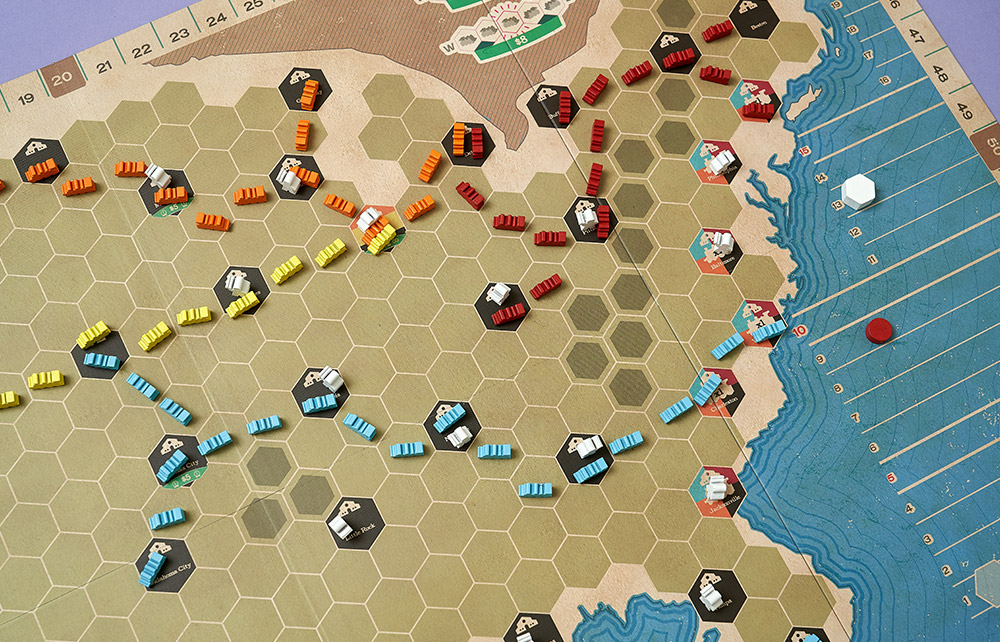
You get money for each city the passenger visits, and the shareholders also get money if their colour routes are used. The more shares you hold in a company, the bigger the pay-out you get from your dividends. This leads to some really interesting decisions that you need to make. Is it really worth moving that passenger all the way to the other side of the map, if your competitors are going to rake in big bucks because you used their routes?
You really need your wits about you, because you’re working with a limited number of trains of each colour. If you’re the only person laying that colour track, that’s not so much of a problem, but if others are using the same colour, you need to think about whether it’s worth striking out toward a new city, if it’s unlikely there’ll be enough trains to finish the route. A new colour becomes available in each round, which makes this a game of balancing strategy, while reacting to the other players’ choices.
Tickets please
The way the map develops in Ride The Rails is really satisfying. The first couple of colours available can only start in the Eastern-most cities, and as the game advances, the routes start to snake West, like ivy growing along a wall. Each round can see some really big swings in VPs, which keeps the game alive and interesting from the first turn to the last. One particularly clever route can move things in your favour, and investing in shares in the company the leader is using, can force them to make some really tricky choices.
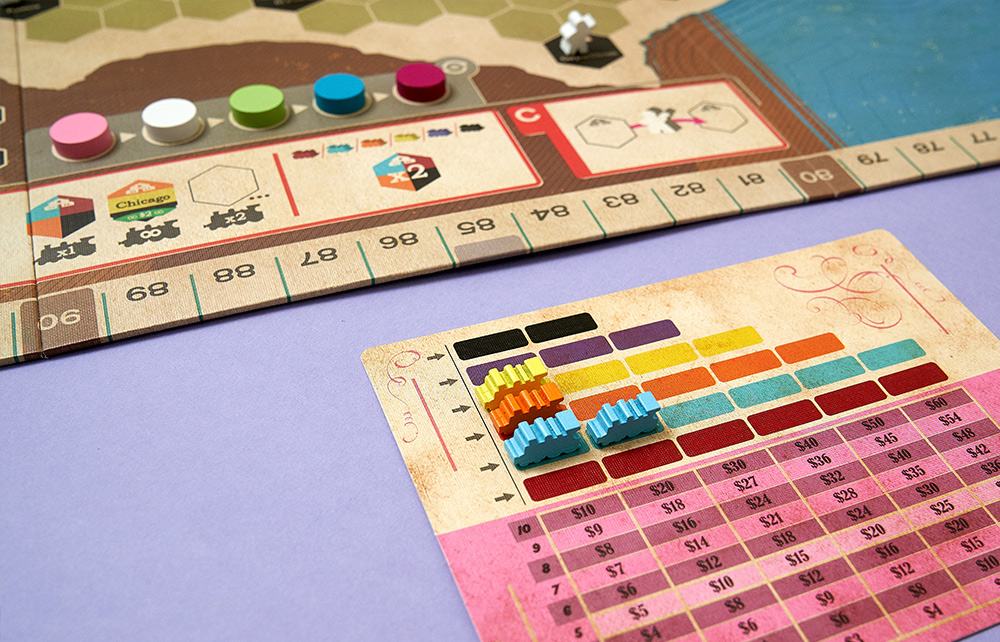
In the first couple of rounds your choices are really limited as to what you can do, and where you’re going to build. When you combine that with the knowledge that some companies only become available for the last two or three rounds, it feels like a straight-forward game. When you reach the late-game stages though, Ride The Rails just springs to life and gets so competitive, so tight, and so interesting. Your passenger choices become a double-edged blade, because there’s no way your choice won’t benefit at least one other player at the same time as you. The trick comes in figuring out how to maximise your own profits, but not at the expense of boosting someone way ahead of yourself.
Full steam ahead
The brilliance of Ride The Rails comes from its speed and simplicity. You can play a five player game in an hour, which is not something you can say about the majority of the 18xx games. In fairness, it’s not a great comparison, because in truth this is nothing like 1830, for example. The only real similarities are in the fact it’s a train game, and there’s investment in companies, but that’s where it ends. It’s a great way to get that Train Game hit in a short time, with rules that you could teach to anyone. A turn is simple: choose a colour to invest in, lay seven or eight trains on the board, move a passenger.
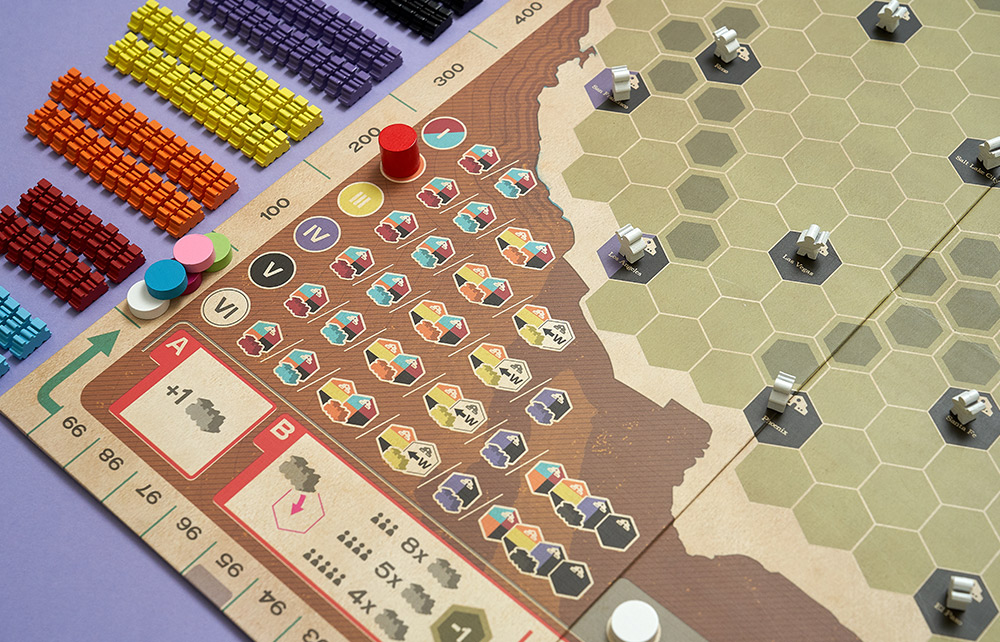
Like many good games, simple actions don’t always mean easy choices. There’s this brilliant cat & mouse feel when two players are both laying trains of the same colours, taking turns. Trying to second guess what they have planned, and where they might link up with other colours is half the fun. Then you have the fun of deciding whether you want to back that horse and invest in their colours, or scupper them by using up their trains in a different direction. It’s a game with no real direct interaction, but an absolute ton of passive interactions.
Final thoughts
I’ll be the first to admit, I have a really limited exposure to train games. It’s just Ticket To Ride in all its various guises mostly. When the package arrived from Capstone, I shared some pictures of the game and mentioned that I’d seen it referred to as ’18xx-lite’. Hoo boy, what a mistake. It turns out that 18xx fans are very invested in their games, and don’t take kindly to bad comparisons. Having taught myself 1830 since, and realising how true this complaint was, made me appreciate just how different the games are. This gave me added motivation to make sure that I a) learned the (numerous) differences, and b) did this game justice in its own right.
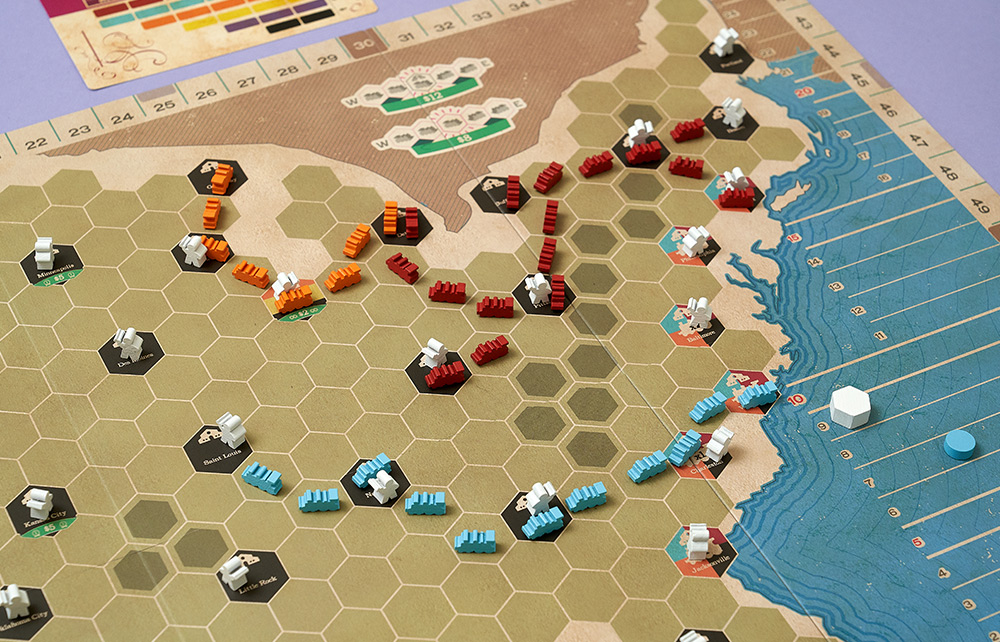
I really like Ride The Rails. John Bohrer is a divisive designer for some people, but make no mistake, he knows his way around a train game. It’s so easy to learn, and so fast to play, the only word to describe it is ‘elegant’. It’s a refreshing change to play a meaty, thinky game, but for it to be so simple in its execution. I can take this game to a game night knowing that I could teach a table of people how to play in a few minutes, play an entire game with a group of happy people, and still have time for another big game. That’s worth a lot to me.
Ride The Rails has sparked a newfound interest for me, with Cube Rails games firmly on my radar. I can’t wait to get my hands on the other Iron Rail games – Irish Gauge and Iberian Gauge. The pastel colours and sleek design go towards making a really beautiful game, and turns what could have been beige hexes and wooden cubes, into something absolutely gorgeous to play with. It’s a great game with three players, but at its best with four or five, so that’s a consideration to make before buying. But for £30, this is an easy recommendation for me to make. Ride the Rails is a great game.
Review copy kindly provided by Capstone Games. Thoughts and opinions are my own.
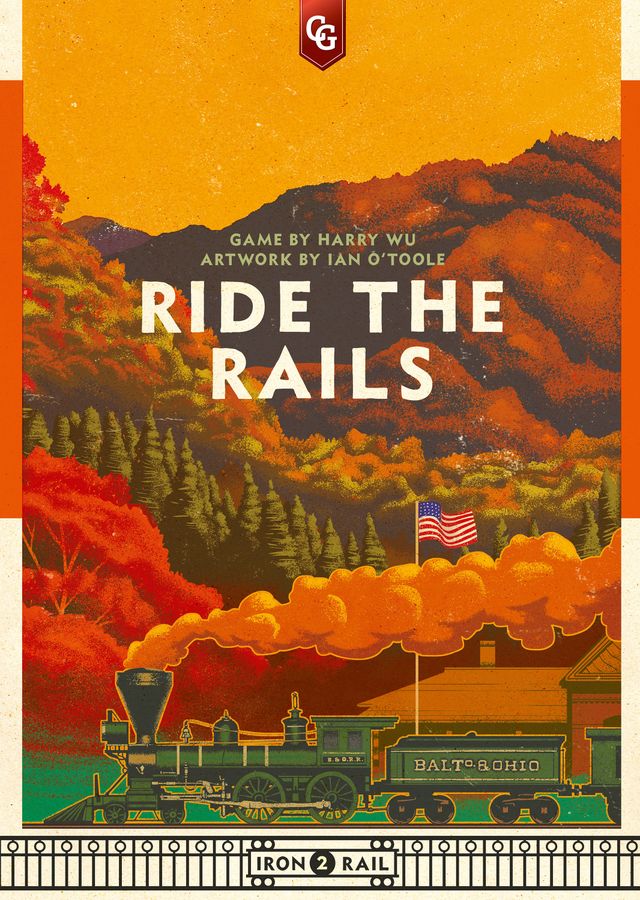
Ride The Rails (2020)
Designer: Harry Wu
Publisher: Capstone Games
Art: Ian O’Toole
Players: 3-5
Playing time: 45-60 mins
